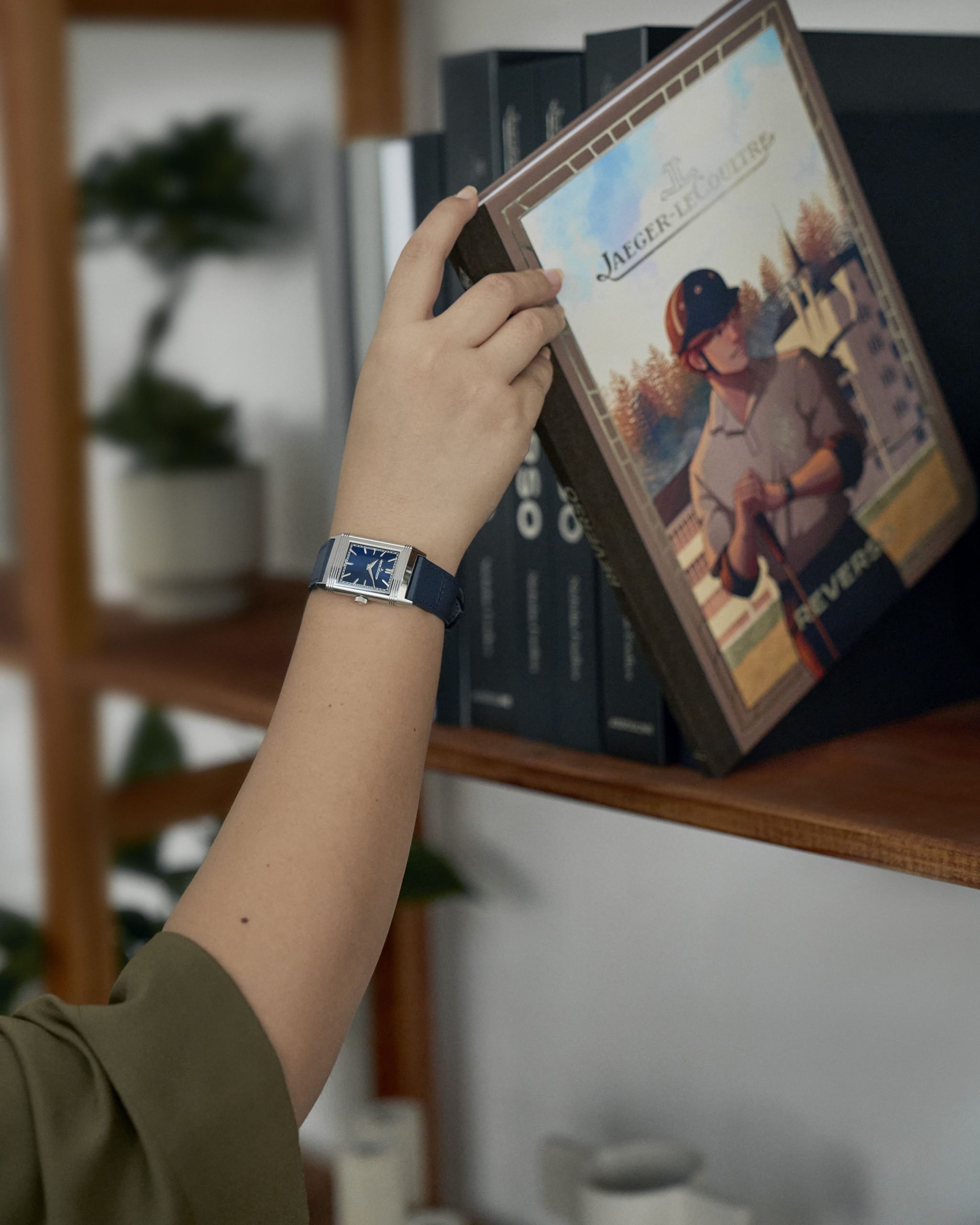Renowned chef André Chiang reimagines train dining and Southeast Asian cuisine with a series of four-hand culinary journeys on the Eastern & Oriental Express. Zaneta Cheng climbs aboard

The Eastern & Oriental express is coursing languidly through the palm forests of Malaysia. It’s just about half past noon and around 20 minutes since the emerald and cream carriages of the classic train pulled out of its stop at Taman Negara National Park. Lunch has been announced on the intercom, and I make my way to Malaya, one of the two dining cars on board.
Water and champagne is already being poured into the crystal stemware of diners who were seated before me and as my glasses are being filled I peruse the day’s menu, which comprises three courses starting with a kimchi niçoise, followed by a hot and sour soup made with Japanese scallop as well as Chinese dried scallop with a side of fried rice, and ending with a coconut blancmanger with nyonya chendol.

Light, refreshing and appetite-whetting, the kimchi niçoise, a dish created by Chef André Chiang, the culinary curator of the Eastern & Oriental Express, is a welcome treat after a morning of chair yoga in the foothills of the limestone cliffs before whizzing 40 minutes into the vast rainforests of the park (twice the size of Singapore). We stop only when we see monkeys scampering in the canopy above us and before our Jeep reaches a patch of cleared forest where camper beds have been set up in the middle of a lazy river.
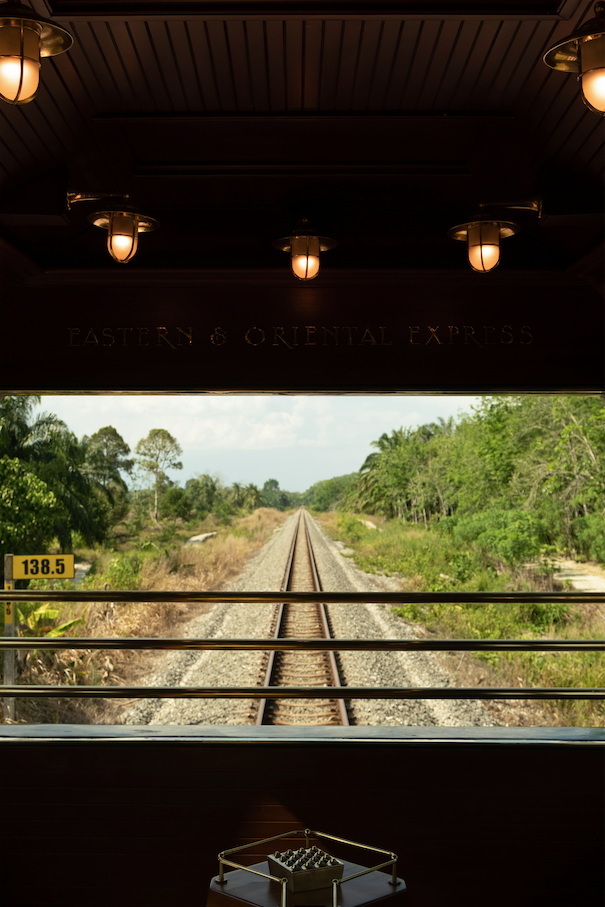
It’s one of several morning itineraries available for the guests aboard the Wild Malaysia journey and while others are tracing the old trails of tigers or spotting birds, we roll up our trouser hems and wade into the river for a 40-minute sound bath symphony with water babbling underneath and birds and monkeys chirping and hooting above. The morning programme ends just as the sun begins to heat up the ground, and the breeze makes way for afternoon steam. We wipe our hands with cold towels before re-entering the train and get ready for lunch.
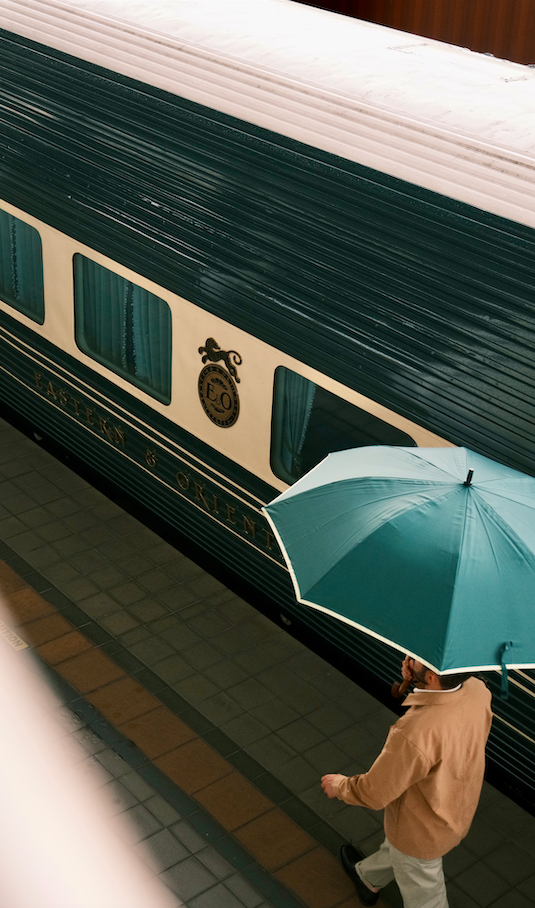
The meal’s main dish has been prepared by Hong Kong–based chef Vicky Cheng and the others by Singapore-based Chiang. Both Michelin-starred with unique philosophies around food, the chefs are on board for a four-day gastronomic journey that looks to combine local flavours with each culinary wizard’s approach to traditional Asian flavours.
Hot and sour soup appears with fried rice and cut chillies on request. Made with lemons and local pepper, Cheng’s hot and
sour soup is a deeper and richer flavour with a far more impactful tang than regular fare. Traditional Southeast Asian chendol, a pandan-flavoured dessert of jelly green strands mixed with coconut shaved ice and topped with a coconut blancmanger (think jelly), serves as the final dish to really cool everyone off from the morning’s activities.
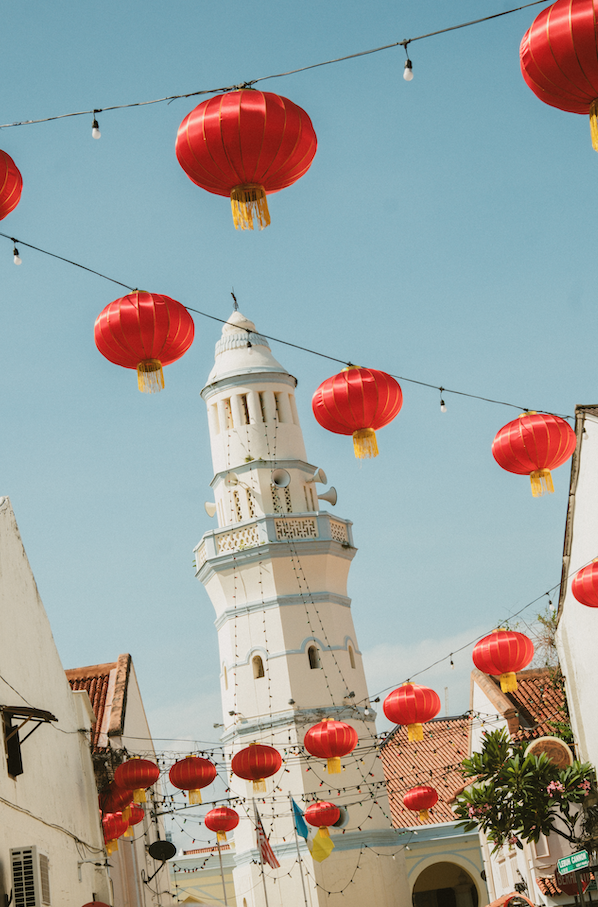
The first of three four-hand collaborations scheduled for the year, the journey is an effort between Chiang and the Belmond team to “redefine train dining” and to “take Southeast Asia’s cultural richness to another level,” says Chiang, who sees the programme, called Tastes of Tomorrow, as a way to tell stories through food.
“I didn’t want a restaurant on wheels. I wanted the train itself to be the storyteller, where each course reflects the landscapes we’re crossing, guided by the hints of spices, which is why we call it a ‘journey of spices’. The goal is to give guests something they’ve never had before, flavours shaped by motion, memory and geography.”
Also see: Swire Hotels unifies House Collective under global Upper House brand
To create the menu, Chiang looked beyond national cuisines to study “migration, trade routes, even colonial influences and the most important – spices of the region.” Movement of people is a particular focus of the culinary underpinnings on board the Eastern & Oriental Express because the train itself, well, moves, but also because, as Chiang says, “the movement of people shaped the way flavours evolved in this region. The E&O is a symbol of that, so the menu had to reflect that dynamic layering.”

Laksa, torched ginger, pandan, tamarind, dried scallops and fermented chilli are all ingredients used across the chef collaborations. But it’s not the use of them that informs Chiang’s vision, rather how to place these ingredients in a new frame.
For example, his signature Laksa Bouillabaisse, a fusion of French seafood and Singaporean spices. It’s why Chiang brought in Cheng. “Vicky and I come from the same training backgrounds – French cuisine. We share a similar mindset, and we both build dishes like compositions. I bring French structure and Southeast Asian intuition. He brings modern Chinese philosophy with deep technique,” Chiang explains.
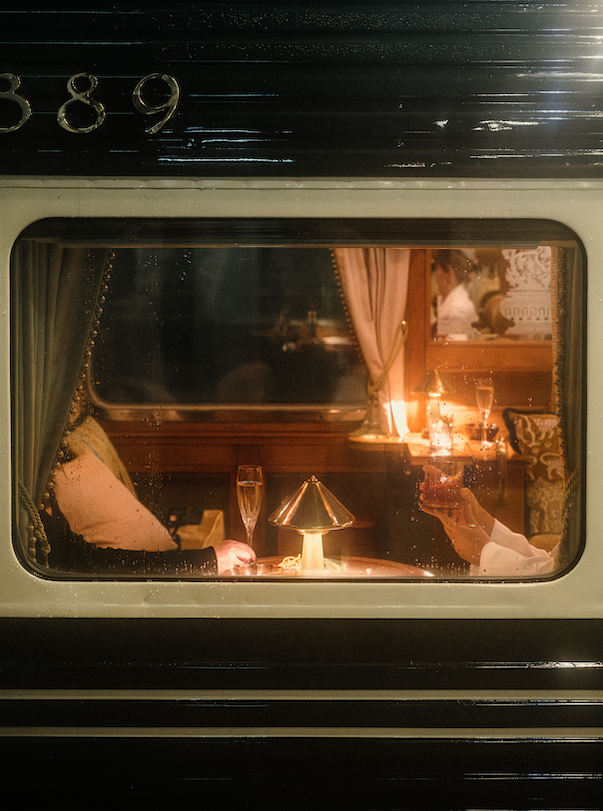
Cheng is quick to agree. “I love bold flavours and spices so it was fun to explore spices from Southeast Asia,” he says. “When André invited me to create a menu for the train, I knew we had to create dishes that were realistically executable on a moving train and be delicious at the same time,” he says sitting next to me as we sip Singapore Slings from the bar attached to the train’s outdoor Observation Deck and catch the breeze as the paddy fields roll past.
“The goal was to showcase different spices and flavours available in Chinese cuisine as well. We’re both very alike as chefs as we come from Asian blood but have French cooking backgrounds, so I feel like there are a lot of immediate mutual synergies. It was very quick and easy to create a menu together.”
Meals on board the train are a highlight in and of themselves. Truth be told, the dining cars already dynamically offset the dishes. Plush curtains with velvet tassels sway next to the white tablecloths that cloak each table. On top are placed polished silverware and gleaming china alongside the earlier mentioned crystal glasses while all is consumed sitting within a velvet upholstered armchair, taking passengers back to a more genteel bygone era.

There’s an anticipation to reboard the train even after a morning spent zipping along the beautifully preserved lanes of Penang’s George Town, a Unesco World Heritage site, by Vespa, exploring old Teochow houses, street murals, Peranakan antique stores and artist ateliers. We pass by alleys where celebrated hawker stalls are scooping steaming soups and chilled desserts to eagerly waiting customers.
There’s mild regret that we don’t pause for a bite but all that is forgotten as soon as we set foot back on the Eastern & Oriental Express where a three-course lunch is being brought on trays to my sleeper cabin. We’ve paused along the banks of one of Malaysia’s largest manmade lakes as I work my way through a mala chicken noodle while the blue velvet cushions of the sofa are being removed by my cabin butler to set the bed for an afternoon snooze.
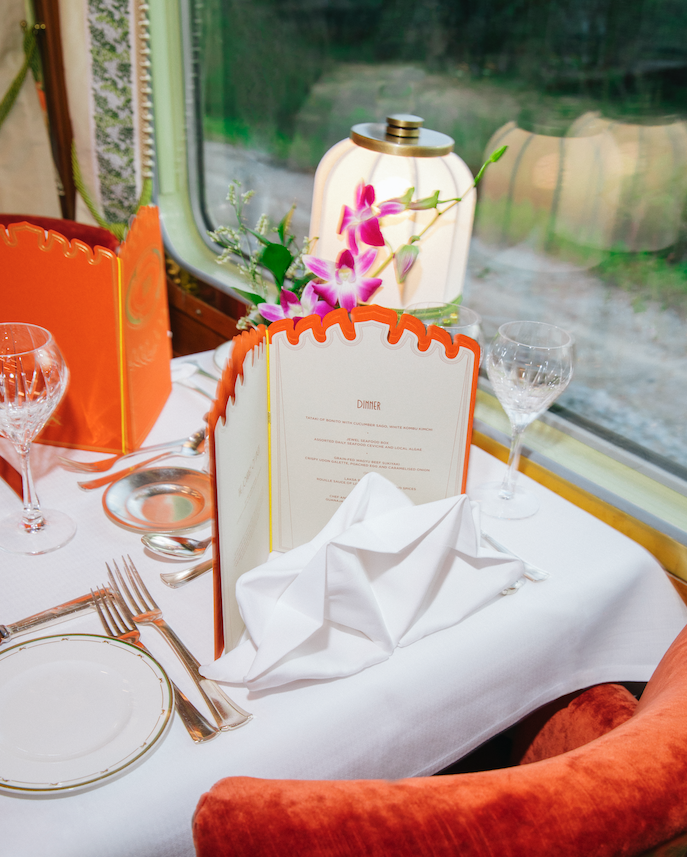
I wake to a thunderstorm that renders a visit to Ipoh almost impossible. But after a quick tour with a guide, we all run back into our cabins to get changed. Dinner is jubilant. Evening programming ranges from pre-dinner piano to post-dinner karaoke. On the final night, Malaysian singer Janet Lee is on board to belt tunes from 1920s Shanghai and classic oldies to a train car of passengers who’ve had three days to acquaint themselves with one another in the dinner bar car.
It’s a raucous start to dinner, which features three dishes from Cheng – marinated botan ebi in Chiu Chow style, salted fish and aubergine with sea cucumber, minced pork and rice as well as a muscat and jasmine tea sable. This comes with an additional consommé from Chiang and two other dishes with mignardises to finish. The chefs walk down the carpeted dining car floors framed by the wooden marquetry that features throughout the train as diners pause their eating to sing their praises.

Cheng’s sea cucumber rice dish with salted fish is a resounding success and guests who have been to his restaurants Wing and Vea in Hong Kong recount their favourite dishes and how these dishes speak to his signatures while those who have not clamour to reserve tables on their next visit to the Fragrant Harbour. As Cheng remarks, “I want [the diners] to get a taste of Wing on a moving train, to make them celebrate and remember the taste even after they’re back home.”
By the looks of it, Cheng and Chiang have executed their visions perfectly. And as both sit in the bar lounge after the final meal is complete, being egged on by Lee to sing show tunes together, guests are discussing whether or not they can book another journey on the train for the subsequent collaborations with Chef Jason Liu of Ling Long in Beijing and Shanghai and Chef Jungsik Yim of Korean restaurant Jungsik in Seoul and New York.
Also see: How Hunger Inc. is shaking up Mumbai’s dining scene with Papa’s and other ventures





